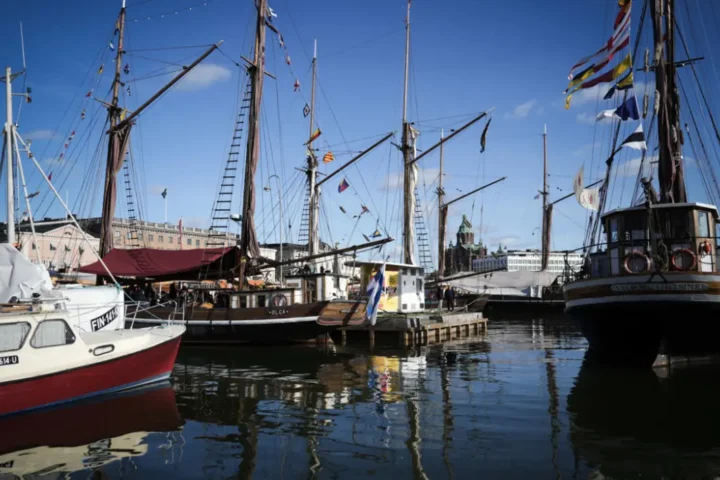The discovery of 3,300-year-old ship far off the coast of Israel proves the advanced navigational skills of ancient seafarers.
The Israel Antiquities Authority (IAA) announced Thursday that a company drilling for natural gas off the coast of northern Israel has discovered a 3,300-year-old ship and its cargo, one of the oldest known examples of a vessel sailing far from land.
Hundreds of intact ancient amphorae were found on board the ship, the authority said, describing it as a “groundbreaking discovery.”
The wreck and its artifacts were discovered 1,800 meters (5,906 feet) deep at the bottom of the Mediterranean Sea by Energean, a London-listed energy company.
The great depth at which the ship was found means it has been undisturbed by waves, currents or fishermen for millennia, offering greater potential for research, according to the IAA.

Why is this discovery important?
Finding the Late Bronze Age ship so far out to sea suggests that the navigational skills of ancient sailors were more advanced than previously thought, as they could sail without having to see land, the IAA said.
The wreck was found last year 90 kilometers (56 miles) off the coast of northern Israel. The boat and its cargo were fully intact, the IAA said, adding that it appeared to have sunk either in a storm or after being attacked by pirates.
“The discovery of this boat now changes our entire understanding of ancient mariner abilities. It is the very first to be found at such a great distance with no line of sight to any landmass,” said Jacob Sharvit, head of the IAA marine unit.
According to Sharvit, researchers had assumed that trade during this period was conducted by boats sailing close to the shore, keeping an eye on the land as they moved from port to port.
He said the sailors of the newly discovered boat probably used the sun and stars to find their way.

How was the shipwreck found?
Energean operates a number of deepwater natural gas fields in Israeli territorial waters. As part of its work, the company uses an underwater robot to scour the seabed.
About a year ago, it came across the 12- to 14-meter-long ship buried in the muddy bottom, nestled among hundreds of jars.
“When we sent them (the antiquities authority) the images it turned out to be a sensational discovery, far beyond what we could imagine,” the company’s environment lead Karnit Bahartan said.
The ship for now is not being retrieved, but Energean worked with the IAA to retrieve two of the jars, which were likely used for carrying oil, wine or fruit, and bring them to the surface for research.
The IAA identified the jars as belonging to the Canaanites, a people who lived in the lands bordering the eastern Mediterranean.








